
Official Edgar Rice Burroughs Tribute and Weekly Webzine Site
Since 1996 ~ Over 10,000 Web Pages in Archive
Presents
Volume 1330

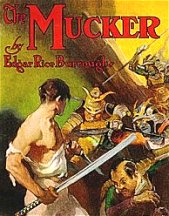 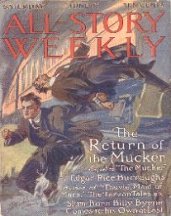
Edgar Rice Burroughs |
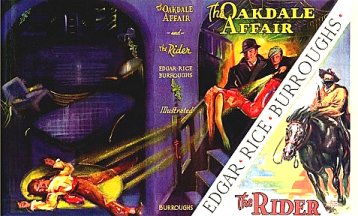
On The Road To Salvation |
In The Outlaw of Torn of 1911 Burroughs reached and exorcised his central childhood fixation freeing his subconscious and integrating his personality but he was still conflicted on his Animus and Anima. The trilogy and coda would address the problem of reconciling his Anima leaving the rectification of his Animus till later.
The internal evidence of the corpus indicates that his tormentor, who I will refer to as John the Bully, was an Irish boy, possibly himself an immigrant manifesting the national hatred of the Anglos on young Burroughs; or of the first generation of Irish immigrants who received his parents' prejudices undiluted. Accordingly, the protagonist of the Mucker is the Irish hoodlum, Billy Byrne, although nowhere in the trilogy does Burroughs mention Irish or Anglo, you have to follow the names.
In the first volume Burroughs identifies his Animus completely with Byrne. Perhaps the name signifies that he got "burned." He will not separate out an alter ego for himself until "Out There Somewhere," when he creates the Happy Hobo, Bridge.
While Burroughs has exorcised the fixation caused by John the Bully, John still occupies the dominant position on his Animus while being the substance of his Anima. Having identified with his oppressor he has adopted the oppressor's characteristics subconsciously, while his conscious mind unsuccessfully tries to follow in the footsteps of the respectable recessive Animus figure of his father, the hero.
In Burroughsian symbolism which is repeated almost without variation several times in the corpus he visualizes his former life as a yacht cruising on calm seas, then there is a sudden squall in which no ship can live, a simile borrowed from Longfellow's "Wreck of the Hesperus." The yacht sinks. The hero is then separated from his true destiny with the intended respectable folk by Fate, being cast in with the thugs, criminals and ne'erdo-wells of the character of John the Bully but he retains his own integrity through it all.
Thus we have the picture of the charming, honest respectable Bridge as a volunteer hobo living his life among society's rejects.
In The Mucker Byrne is yacht wrecked on a jungle island somewhere in the Pacific along with an Anima figure, the Anglo Barabara Harding. In Burroughsian symbolism the "island" represents the psychologically circumscribed prison of his mind into which John the Bully cast him. The Anima figures which are always Anglo represent the identity of the former clothing of his Anima, probably his mother.
The question here is whether Byrne and Harding will fall in love. The answer is no.
In a series of hostile encounters Byrne is wounded by the natives. Recuperating by a pool along a mountain stream Barbara nurses Byrne to health. Thus in Freudian terms Burroughs identifies with his oppressor while tending to his welfare.
Nevertheless Burroughs' hatred of his oppressor precludes the possibility of a union between Byrne and Harding. On the return to civilization or, rather, New York, the disparity in their cultural levels appear stark so Harding dismisses Byrne. He, realizing the justness of the decision, goes his own way back to the demi-monde.
Burroughs has subtly removed John the Bully from his Anima so that now he has a female figure still clothed by Fate but now in men's clothes rather than women's clothes. He has at least reversed the situation which makes life more comfortable for him but still irritating.
For three years he is stalemated although he wrestles with the problem in twelve more books before he picks up the thread again in the thirteenth, Out There Somewhere. Funny how numbers like ten, twelve and thirteen crop up like that, isn't it?
In this book Burroughs slips out from under the dominance of John the Bully but does not rectify his Animus; his hero aspect does gain equality with the clown aspect but not the upper hand.
Byrne returns to Chicago to face trial for his murder charge. Wrongfully convicted, he escapes to flee Out There Somewhere where Bridge/Burroughs awaits him. On the road to Anywhere he blunders into the camp of the Happy Hobo. Bridge is boiling his beans while yodeling the verses to Knibbs' poem: "Out There Somewhere."
Let's take a moment to analyze the name, Bridge.
On one level Bridge means just that. The character is meant to bridge the transition from Byrne the Oppressor to Burroughs' successor identity. A bridge is also the preferred place for hoboes to construct their jungles. In connection with this, the name commemorates one of Burroughs' heroes the hobo writer Jack London. Bridge is not the protagonist's real name but was assumed when, because of his use of long words, a fellow hobo had called him Unabridged which was then shortened to Bridge. As the leading authority on Burroughs, George T. McWhorter, points out, Bridge gives his name as L. Bridge, which McWhorter says means London Bridge, meant as a joke. As hoboes gather by bridges, naming Bridge "London Bridge" after Jack London is even funnier. You may not want to take the time to dissect a name like this but if you want to puzzle things out Burroughs will always reward you.
When Byrne haps on Bridge it is possible to see the personality of Burroughs melding into the character of Bridge. When Burroughs read the first two verses of the Knibbs poem in which the hardened hobo listens in on the College Guy, ERB must have seen both aspects of his Animus melding them attractively into one which he then separated from his dominant aspect of Byrne to escape his servitude to John the Bully. Bridge is obviously an Anglo who is joined to the Irish Byrne. Thus the two aspects of Burroughs' own Animus, one cultured, one rude. Burroughs accepted the fact that he had a "dual" personality.
While in the process of separating his identity from that of the Irish John the Bully he still feels obligated to help him no less than Barbara Harding did. Thus, even though Bridge notices the cuff marks on Byrne's wrists he sagely suspends judgment until he knows the man better.
Burroughs has some first hand knowledge of these Knights of the Road. In 1904-05 he had held the job of a railroad bull in Salt Lake City. He had had plenty of opportunity to talk with many of them while observing the jungles first hand. One may assume this scene is a fairly accurate representation.
While he and Byrne are getting acquainted they are jumped by a couple of vicious criminal 'boes who they repel. After Byrne tells his story, which Bridge accepts, he allies himself with the fugitive in his flight from the police. Once again we have identity and service with the oppressor.
A good book at the time, this novel is now a charming period piece of the long ago and far away variety. One mourns for a lost heritage.
In a delightfully written sequence of episodes Burroughs leads Byrne and Bridge down to El Paso a step or so ahead of the Chicago coppers who seem to rival the FBI in jurisdiction. Tracked to El Paso by those dogged Chicago police the two 'boes slip over the border into Ciudad Juarez then out into Chihuahua province.
Who should turn up in Chihuahua but Barbara Harding. She and Bridge have a mild flirtation but in the end in an act of generosity, ever helpful to his oppressor, Burroughs gives her in an improbable union to Byrne. The Mucker, Byrne, passes out of the story.
All through the novel Bridge has been quoting the stanzas of "Out There Somewhere" while emphasizing the couplet:
And you, my sweet Penelope, out there somewhere you wait for me,
With buds of roses in your hair and kisses on your mouth.Penelope was the wife of Odysseus, the prototype of all wanderers. She had waited patiently for twenty years for her husband to return from the Trojan War. Twenty years is a symbolic figure throughout Burroughs' writing connected with the reconcilement of his Anima.
Out There Somewhere closes with this passage:
It was a month later, spring was filling the southland with new, sweet life. The joy of living was reflected in the song of birds and the opening of buds. Beside a slow moving stream a man squatted before a tiny fire. (Why tiny?) A battered tin can, half filled with water, stood close to the burning embers. Upon a sharpened stick a man roasted a bit of meat, as he watched it curling at the edge as a flame licked it he spoke aloud though there was none to hear:Just for a con I'd like to know (yes he crossed over long ago;
And he was right, believe me 'bo!) if somewhere in the South
Down where the clouds lie on the sea, he found his sweet Penelope
With buds of roses in her hair and kisses on her mouth?Which is what they will be singing about me one of these days he murmured.
Look at all those sexual images: Spring, buds, tiny fire, battered can half filled with water next to the burning embers, sharpened stick, bit of meat, flame licked. Clearly Burroughs is seeking salvation for his Anima.
Note the "battered can half filled with water." Burroughs' Animus being the battered can while the can is half filled and not half empty. Water is a symbol of the female. The promise is that the can will soon be filled to overflowing with the feminine waters of salvation when Bridge finds his Penelope.
Spring is, of course, the time of nature's resurrection.
He might as well have said Easter and called himself the Christ.
Burroughs appears to be pointing the direction for the working out of his psychosis. He indicates a fairly well developed vision of a system of psychology. One which differs from the existing ideas of 1910 and much in advance of them. He already had his vision in 1911 when he began writing so his vision must have been brought to fruition sometime between 1900 and 1910 in America which excludes Freudian influence. Translations of Freud's work only began to reach America in 1912.
He mentions 1903 or '04 as fruitful by saying something occurred twenty years after his fixation which was in 1883 or '84. Both of William James' major works had been published by then. More importantly, a book titled Human Personality and Its Survival After Death by FWH Myers which deals with the concept of the unconscious had appeared in 1903. One can't be certain that Burroughs obtained the book by 1904 but it is possible.
He would have been aware of Myers because H.G. Wells mentions him in his When The Sleeper Wakes of 1899. Whether Burroughs would admit that he had read the stunning fantasias of "Mr. Wells" or not, it seems clear that Wells was an important influence. Wells had the tendency to name significant works and writers which were either influential on the period or had influenced him. Burroughs exhibits the same trait. Wells had a good eye for the significant and important. Actually the careers of Wells and Burroughs are intertwined. I have written of that elsewhere.
FWH Myers, who was both a scientist and occultist, was deeply interested in the "unconscious." He had a well developed concept of the notion long before Freud. Burroughs offers amazingly graphic descriptions of the unconscious in several different places of the corpus: I especially recommend The Chessmen of Mars.
If one takes the time to penetrate the "fictionalizing" of Burroughs one will find that he is a psychologist of note although without the systematization of Freud. But then method and system are about all Freud has to offer; for the rest he is blowing smoke.
Interestingly I worked out a nearly identical vision of the mind as Burroughs which makes it relatively easy for me to see what he is doing. It is also true that I was an avid reader of the Tarzan books as a child so I may have subconsciously picked up the rudiments of Burroughs' thought merely unconsciously integrating them into my own thinking later in life. Our two notions are so close that I must have been influenced by him although my own central childhood fixation was a mere variation on his so that perhaps our minds were driven in the same direction by circumstance.
Burroughs was terrorized into his fixation while mine was induced in a hypnoid state. While Burroughs was able to resolve his issues as did I, release was only partial for him or he had not prepared suitable personas for transition. Thus when he shucked John the Bully he was left with an unclothed Animus. Having no reasonable persona to step into he tried to assume the persona of his creation Tarzan, which led to disaster.
In my case I realized that if I exorcised the fixation being only vaguely aware of the Anima and Animus at the time that having exorcised the fixation, I would need an adequate role model to make the transition. Hence I developed a successful alternate Animus figure which I was able to assume when I understood and rectified my Animus. My main Anima figure appears to have been strong and adequate. It supported me all my life.
My Animus had been assassinated when I was seven. Burroughs interest in assassins obviously stems from the same cause.
At any rate, by the end of Out There Somewhere, Burroughs has separated an alternate identity in Bridge from John the Bully or Billy Byrne while at least having reclaimed the female identity of his Anima while being able to discard an interim Anima figure, Barbara Harding, as a gift to his oppressor. In other words, John the Bully could have what he stole which was no longer of any use to Burroughs.
His Anima is now female but still clothed in male garb.
This is made evident in the last volume of the trilogy, "The Oakdale Affair." This book was originally titled Bridge and the Oskaloosa Kid. As both this title and Out There Somewhere are more descriptive of intent I will refer to the book as "Bridge" or "Bridge and the Kid."
As the ending of Out There Somewhere indicated Bridge was hot on the trail of his Penelope "where the mist meets the sea somewhere in the South." Burroughs actually tried to act this fantasy out. It may be a coincidence, but nine months, the duration of pregnancy, after finishing Out There Somewhere Burroughs gave birth to Bridge and the Oskaloosa Kid in which he finds his Penelope.
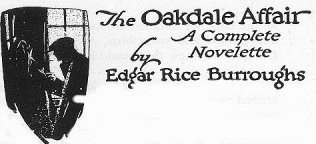
Fixated as he had been so that he associated himself with the criminal or hobo class, Burroughs would have felt himself unworthy of the aristocratic Barbara Harding. In "Bridge" he moves down the social scale to associate himself with the small town banker's daughter, Abigail Prim. An abigail is a personal handmaiden so Burroughs makes his Anima a prim personal hand maiden. That she may not be the One is indicated by the fact that she is only nineteen, one year short of the magic twenty.As the story opens, Gail, dressed in men's clothing, the same as Burroughs' Anima, is robbing her own safe in her parents' home. once again a version of his encounter with John the Bully. Pocketing this treasure which symbolizes the female treasure that a woman brings a man she hits the road as a hobo. She immediately falls in with a band of criminal IWW hoboes who have initiated a crime wave in placid Oakdale.
They intend to kill and rob her just as the hoodlum John the Bully killed Burroughs' Anima robbing him of the treasure of the female, or his X chromosome. Like Burroughs she runs away, with the Wobblies in hot pursuit.
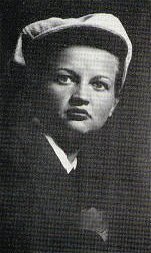
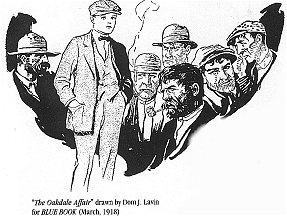
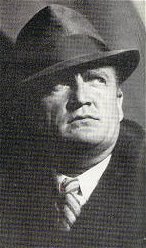
Who should she meet at the proverbial fork in the road but the Happy Hobo, Bridge. Bridge is immediately attracted to this strange boy who he doesn't realize is a girl. He decides to protect and help him although he doesn't understand why he is so attracted to this apparent boy. Still quoting snatches of Knibbs and Service they flee up the opposite fork, just as Burroughs' life had been diverted, to a deserted farm house to escape the gathering squall.The image of the house is very interesting. A house is a symbol of the self. After his encounter with John the Bully, Burroughs' house or self would have been vacated and haunted. So Bridge and Gail, Burroughs' Animus and Anima, enter the deserted house to escape the storm which begins to break upon them.
The house is reputed to be haunted, in other words, the rejuvenated Burroughs/Bridge and his reborn Anima enter into his pre-John the Bully domicile.
While they are congratulating themselves for having escaped the storm, a high-powered motor car roars up the road. They watch as a female form is flung out the window, while a man simultaneously fires a shot after her. Fearing she is dead they gather her up, bringing her into the haunted farm house.
The woman represents Burroughs earlier Anima, who was assassinated by John the Bully but who now returns as psychological baggage to haunt him.
Right after this woman come the two IWW criminals in search of Gail and her loot.
They hear a chain clanking in the basement: the past in the subconscious. Bridge would face the danger but, solicitous of this strange boy who is terrified, all five retreat into a room on the second floor where they stay the night. Thus we have the house representing Burroughs' self, his new Animus and Anima, his old Anima, and the two criminals perhaps representing his Byrne Animus and the male Anima given him by John the Bully.
Toward morning the storm lets up, the two villains are driven off by Bridge, who then begins to make the acquaintance of his new Anima, who rustles grub while Bridge rustles rhyme.
In a very charming book rather reminiscent of Booth Tarkington, they pass through many adventures, but are never separated, contrary to Burroughs' usual approach, until at last Fate puts their backs against the wall. About to experience the pleasures of the "hempen noose" both are rescued.
Bridge had discovered that the Oskaloosa Kid was actually a girl. We now discover that Bridge is not a true hobo but a Virginia gentleman who had opted for a life on the road. Gail dons her female raiment completing the transition in Burroughs' Anima from a man in women's clothing to a woman in women's clothing. Bridge is reunited with the respectable folk.
Still Gail Prim was not a satisfactory Anima for Burroughs. He still felt unworthy of such a princess. She was a Banker's daughter while he still felt like no more than a cleaned up bum. Completed in June of 1917 it would take Burroughs until 1924 to make another attempt when he wrote the unpublished Coda to the trilogy, Marcia of the Doorstep.
Marcia was left on the doorstep of an inept New York actor named Marcus Aurelius Sackett. Marcus Aurelius was the stoic emperor of Rome. Stoicism is how one bears the slings and arrows of an unkind and unjust fate. One just grits one's teeth and hangs on which is how Burroughs lived his life. The foundling's name, Marcia Aurelia, represents ERB's desperation.
Moving down the social scale he has rejected Barbara Harding, a socialite as an Anima figure as well as Gail Prim, a handmaiden, to try with a little orphan girl who he hopes will be sufficiently beneath his station to be grateful to him for selecting her.
Burroughs is having a terrible time trying to come to terms with his Anima. He's got the proper conception but he lacks the execution. He first gives Marcia such terrible antecedents that he himself blanches at them, altering the antecedents to make her socially acceptable to himself.
True to psychological reality Marcia was conceived in Chicago as were Burroughs' ideas but born in New York where his stories first saw the light of day.
We are first led to believe that her mother conceived her illegitimately by a married man. This is apparently too much for Burroughs as he later tells us that the man was married when he impregnated Marcia's mother, but he either got a quick Chicago divorce to marry the woman before Marcia was born or else he married her bigamously.
Having given birth to Marcia her mother leaves her on the Sackett doorstep appearing the next day to seek a room with the Sacketts. Thus mother and daughter grow up together but Marcia never learns that the woman is her true mother.
The mother represents Burroughs ' pre-John the Bully Anima while Marcia is his search for a replacement. As his Anima was not strong enough to resist John the Bully he feels free to represent her as a woman of loose morals if not worse.
The novel is a duplicate of the Mucker with a different denouement. After introduction Marcia is inducted into the friendship of a society woman who convinces a 16-year-old Marcia to go on a Pacific yachting cruise.
Aboard the yacht is the dashing alter-Animus John Chase III. A fine military type, Jack Chase III substitutes for Billy Byrne. Thus Burroughs' Animus or Ego has separated from the thug Billy Byrne into Bridge the Anglo-Virginian gentleman into the genteel, if not aristocratic, Jack Chase III. Byrne-Bridge-Chase- one, two, three- Jack Chase III. The John represents the positive side of John the Bully while the Chase represents the chase for the rectification of his Animus into an Anglo model.
Once again we have the yacht peacefully sailing the ocean of life. The yacht representing young Burroughs' comfortable life in the bosom of his family. Then there is a sudden squall in which no ship can live. The yacht representing his early life sinks.
While in this story both Marcia and Chase III were destined to take the lifeboat with the respectable people, Fate intervenes and their lots are cast with the disreputable element. As in The Mucker, Fate casts them ashore on an island. As with Byrne and Barbara Harding, Marcia and Chase III are thrown together after being separated from the others.
They follow a stream up a mountain side toward the ridge. While Barbara tended the wounded Byrne while rejecting his advances, Chase III protects and aids Marcia reversing the roles. In the midst of a blinding rainstorm as Chase III hauls Marcia up the slope he realizes he loves this little orphan girl. Disregarding the pelting rain he either strains or crushes her to him, I forget which. The only way Burroughs ego aspects can hold a woman is to either crush or strain her to them. Well, some girls like it rough.
Overjoyed at finding their mutual love the aristocratic and the orphan girl top the crest. There is nothing but light and sunshine on the other side; the grass is truly greener on the other side of the mountain. Not only that but the respectable people from the wreck were landed on that sunny shore. Chase III and Marcia reverse the situation of the Mucker and Barbara by being reunited with the respectable people.
Burroughs cannot yet see himself as this privileged aristocratic although by now ERB was wealthy, inhabiting the ranch that would become his city of Tarzana. Chase loses touch with Marcia on the way back to the States. Unable to bear the loss he degrades himself to Burroughs' emotional level by drinking and gambling. When he has undergone the appropriate degradation he and Marcia are married. She has also attained the age of twenty.
Burroughs still had trouble reconciling his Anima. His further efforts do not concern us here but he is still troubled by the masculine interjection on his Anima. In a later story he will team up with a mannish woman who is his slave. John the Bully did a real number on him.
These were the personal problems Burroughs was working out in the Mucker Trilogy. That was one key. In another key he was exploring a number of social and political problems. I will analyze the trilogy from these points of view in Part II: ERBzine 1331 and ERBzine 1332
The Affair Jack Johnson
R. E. Prindle welcomes your comments
at:
dugwarbaby@yahoo.com
|
and Follow the Navigation Chart for the Entire Series of Articles |
|
Differing viewpoints are welcome. |
|
are not necessarily those held by Edgar Rice Burroughs, Inc. |
![]()
![]()
![]()
![]()

![]()
BILL
HILLMAN
Visit
our thousands of other sites at:
BILL
AND SUE-ON HILLMAN ECLECTIC STUDIO
ERB
Text, ERB Images and Tarzan® are ©Edgar Rice Burroughs, Inc.-
All Rights Reserved.
All
Original Work ©1996-2004/2010 by Bill Hillman and/or Contributing
Authors/Owners
No
part of this web site may be reproduced without permission from the respective
owners.